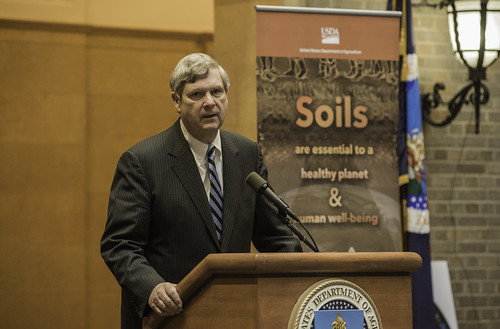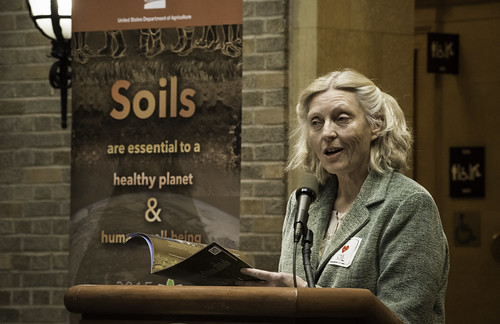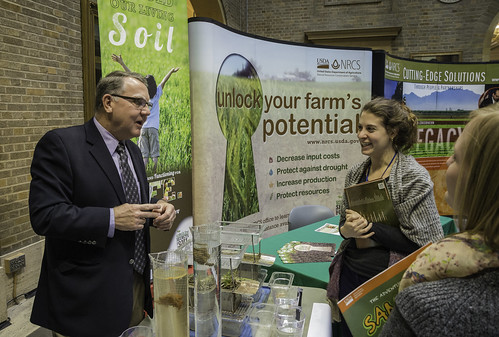
Yesterday, we officially launched the International Year of Soils here at USDA.
Most people don’t realize that just beneath their feet lies a diverse, complex, life-giving ecosystem that sustains our entire existence. I’m talking about soil. There are more living organisms in a single teaspoon of healthy soil than there are people on the earth.
Our soils are alive. We talk about soil health – not soil quality -- on purpose. It’s an important distinction. Anything can have a “quality,” but only living things can have health.
The United Nations recently declared 2015 as the International Year of Soils in an effort to highlight the important role of soils in food production and biodiversity preservation. This week, USDA launched International Year of Soils with an event at USDA headquarters. In his remarks, Secretary Vilsack said that this year marks an opportunity to focus on the important role soil plays in our lives.
We’re proud of the UN’s efforts to raise awareness for soil, and we look forward to a year of celebrating it. We’ve partnered with Soil Science Society of America, which is spotlighting soil through a particular theme each month, starting with “Soils Sustain Life” for January.

USDA’s Natural Resources Conservation Service (NRCS), was born out of one of the worst ecological disasters in American history – the Dust Bowl of the 1930s. That’s when President Roosevelt established the Soil Conservation Service, or SCS (which would later become NRCS), to help farmers and ranchers recover and repair American agricultural lands after years of soil mismanagement. We’re continuing that conservation work to this day by providing assistance to producers looking to improve the health of the soil on their land.
In the coming decades, the global agricultural community will be challenged to keep pace with society’s needs in the face of a changing environment. Farmers, ranchers and forest landowners in the United States and worldwide will be counted on to provide food, fuel and fiber for the world’s population amid these new realities.

Conservation practices that work to improve soil health is one of the best tools we have to help producers in the face of these impending challenges. Healthy soils help us maintain and even improve their productivity, while helping to address natural resource concerns.
Healthy soils are a critical piece of mitigating impacts from weather extremes. They have a greater water holding and nutrient cycling capacity. In drought, this can help ensure production continues. In heavy rainfall, healthy soils can help keep water and nutrients in the soil where they belong and avert runoff into nearby waterways or flooding communities downstream.

And we’re continuing to explore the incredible capacity of our soils to store carbon dioxide.
The health and vitality of our soils are rooted in four basic tenants that make up a soil health management system: minimize disturbance; keep soil covered; energize soil with plant diversity; and maximize living roots. That is the recipe for a healthy, happy and productive soil system.
At NRCS, soil health is hands down one of the most important efforts we’re tackling as an agency.
Learn more about the International Year of Soils, and be sure to check out our monthly video series on soils on the NRCS YouTube Channel. Also view more photos of yesterday’s event. To get started with NRCS, visit your local USDA Service Center or www.nrcs.usda.gov/GetStarted.

